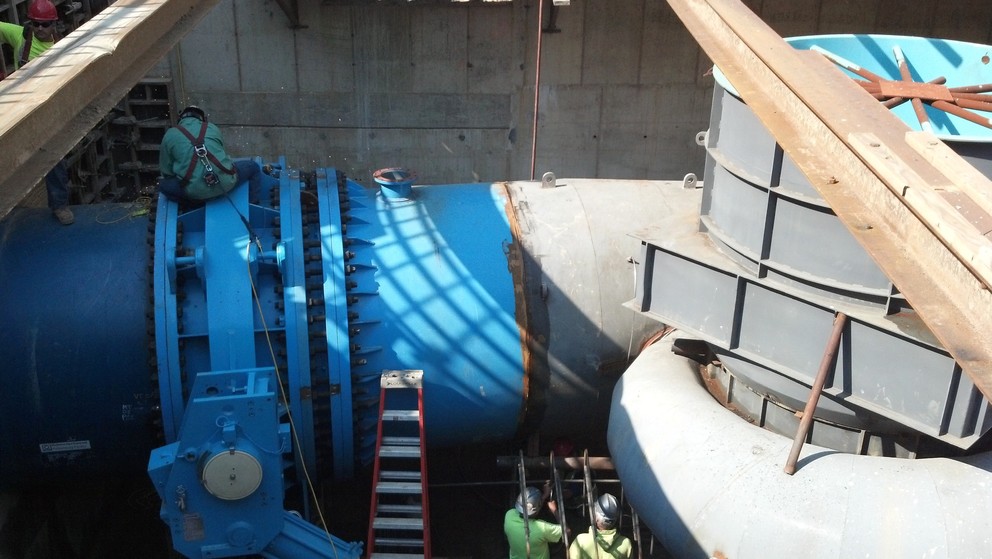A partnership in support of the creation of a hydroelectric facility has provided Penn State with both sustainable energy and educational opportunities for students. The Mahoning Creek Hydroelectric Facility — a certified low-impact plant, built using existing infrastructure — now supplies Penn State with 8 percent of its energy.
“This exciting project contributes directly to many of our goals, including our target of a 35 percent reduction in greenhouse gas emissions by 2020,” said Steve Maruszewski, assistant vice president of the Office of Physical Plant (OPP). “It also helps support national renewable energy production.”
In addition to providing more sustainable energy for the University, the partnership also offers new and exciting educational opportunities for students. After initially approaching Penn State in 2012, Enduring Hydro brought on four interns from programs including engineering and environmental science. The students were involved in areas such as design, management practices, power generation, economics and environmental impact. Enduring Hydro will look to hire up to five interns each year as the project continues.
“This hydroelectric project directly contributes to both in-classroom education via the development of an energy course module and extracurricular education through the creation of up to five annual internships. It’s a great example of how to achieve integrated and balanced solutions,” said Maruszewski.
The Mahoning Creek Dam, located between Redbank Township and Wayne Township in Armstrong County, near Kittanning, Pennsylvania, was originally built in 1941 as a flood control structure by the U.S. Army Corps of Engineers. While the design included a conduit allowing the dam to be used to produce hydroelectric power, the project was never completed due to World War II. Decades later, Enduring Hydro, LLC was able to follow through with the original plan of a functioning hydroelectric facility at Mahoning Creek Dam.
After breaking ground in February 2013, the plant began commercial operations by December of that year. Today the facility is made up of a 50-foot-high intake structure attached to the upstream face of the dam, a 1,090-foot-long, 10-foot-diameter penstock, and a powerhouse containing a 4-megawatt (MW) and a 2-MW vertical-shaft generating unit. It is expected to produce more than 20,000 megawatt hour of electricity annually for at least 50 years. “In addition to its environmental benefits, this purchase will also reduce our anticipated annual energy costs for the next 10 years,” said Maruszewski.
“I’m proud that Penn State and OPP were supportive of and a part of this project,” said Rob Cooper, director of energy and engineering in OPP. “The partnership is good for Penn State because it offers educational opportunities for our students, while providing green power to support our carbon reduction efforts. Beyond that, it provides a competitive energy price point for the University, provides jobs and utilizes existing infrastructure within Pennsylvania.”
According to Kristina Johnson, chairman and CEO of Enduring Hydro LLC, the Mahoning Creek facility is just one of 45 dams across the state of Pennsylvania with the infrastructure in place to become hydropower facilities. It is estimated these facilities combined could produce 630 MW and create more than 10,000 jobs.
“We’re grateful to Penn State for the partnership in helping make this project a reality,” said Johnson. “The project really speaks to the vision and cooperative spirit of Penn State.”



